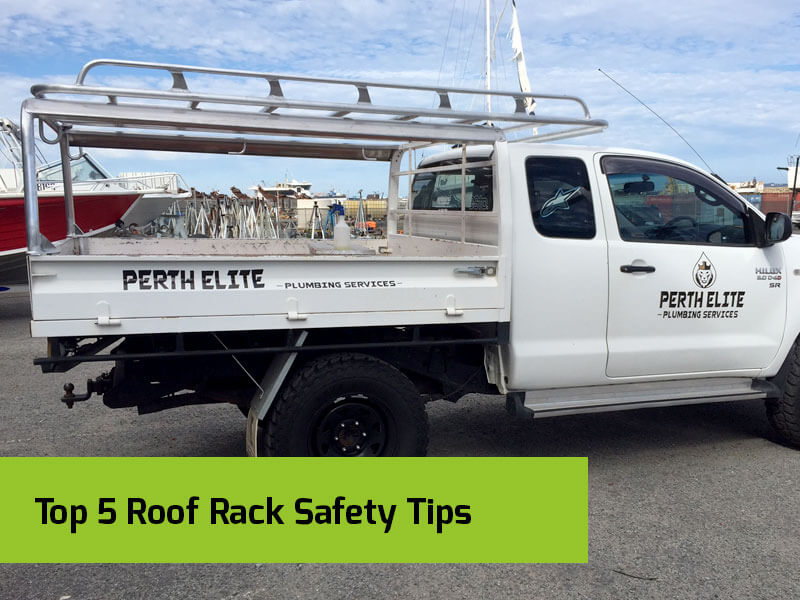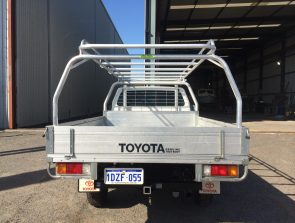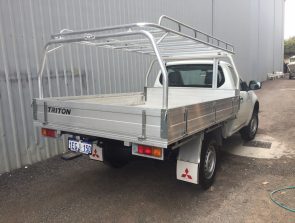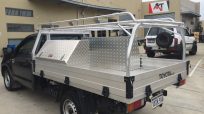Top 5 Roof Rack Safety Tips

Whether you’re a hard-working tradie or a weekend adventurer, no doubt you’ve experienced the usefulness of a roof rack and thought, “How did I ever get through life without one of these?” After all, a job becomes that much easier to get done when you’ve got all the essential tools right there on hand, safely secured and organised. And the same goes for weekend getaways, whether you’re planning on heading out with the lads on a fishing trip, packing up the bikes for a day of cycling, or venturing out for a few nights of camping, cheeky drinks and hiking throughout the bush. You definitely don’t want everyone in your vehicle to be squished together like a bunch of sardines in a can, whinging and complaining throughout the whole entire trip. With a roof rack installed, you can transport whatever you need effortlessly, creating more free space inside the car and making your weekend adventure that much more enjoyable for the whole group.
Roof racks are super useful, but adding any extra load onto your vehicle is going to come with some risks- and that’s definitely true if it’s not done in the right way. So, if you’ve just had a roof rack installed and want to prevent yourself from causing embarrassing accidents or putting other drivers on the road at risk, you’d probably want to read through our top 5 safety tips for roof racks:
1. Get a Rack that Suits Your Vehicle
If your vehicle didn’t come with a roof rack, then your first priority is going to be to get a roof rack that pairs together with your vehicle like bacon pairs with eggs. Obviously, prefabricated roof racks are probably not going to do the job. If you’re in the market for a roof rack that’s going to provide you with real value, then you’re going to want to go for something that’s been custom-made to suit your vehicle’s specifications. That means it’s been manufactured to suit the exact size and dimensions of your vehicle, along with all the items and materials that you’re wanting to carry.
2. Distribute the Load
Heard of the term load shifting? Well, if you haven’t, then you should know that it’s a pretty dangerous hazard that can occur when people don’t make sure to distribute the weight on top of their roof racks evenly. If the weight on top of your roof rack is loaded too close to the front, then it’s going to feel like you’re diving forward in your vehicle each time you brake. And when it’s too close to the back? Well, you’re definitely going to feel the effects of that whilst you’re steering; it’ll be like something’s pulling your vehicle back the whole time. The moral of the story is, distribute the weight on your roof rack evenly, and you’ll be in for a smooth ride throughout the entire trip.
3. Keep Ease of Access in Mind
You’re either one of two types of people in life; you either stuff all your belongings into your luggage bag and end up having to sit on it to zip it closed, or you fold and organise everything neatly, so that closing, unpacking and retrieving items is always a walk in the park. To each their own when it comes to packing luggage, but when it comes to packing your roof rack, we’d say try to be more like that second person. The general rule is, pack the heavier items first, then load it up with the lighter items. Any tools or equipment that you’ll need to use sooner should be easier to access, so you won’t have to unload your whole entire roof rack to get to what you need to use.
4. Don’t Go Over the Load Limit
You may be tempted to really test the limits of your roof rack, especially when you’re your rack is packed to the top, but you’ve only got a few extra items more that you want to add on. The thing is, this isn’t Tetris, so whenever you’re thinking of going over the weight limit on your roof rack, we’d recommend making a hard pass on that idea. An overloaded roof rack can do a number of things to your vehicle, including decreased fuel efficiency and higher wind resistance. If you’re turning corners at a certain speed, it could even cause your car to tip over.
5. Calculate Height
Unless you drive trucks in your day-to-day schedule, then you’ve probably become used to ignoring those ‘’low clearance’ signs found before bridges and tunnels. But when you’ve got your vehicle’s roof rack loaded up with tools and equipment, it’s important to know just how low you can go, so that you can avoid making embarrassing collisions with the bottom of some long-hanging structure. Prepare yourself by measuring the top of your vehicle once the roof racks’ been loaded. After that, it all comes down to bypassing those low-clearance structures that you just can’t make, and just keeping an eye out throughout the drive.
In for a brand-new roof rack that can help you out on the daily grind, but also during your weekend adventures? Give Great Racks a call today and experience the difference that a well-made roof rack can do for you and your vehicle!








